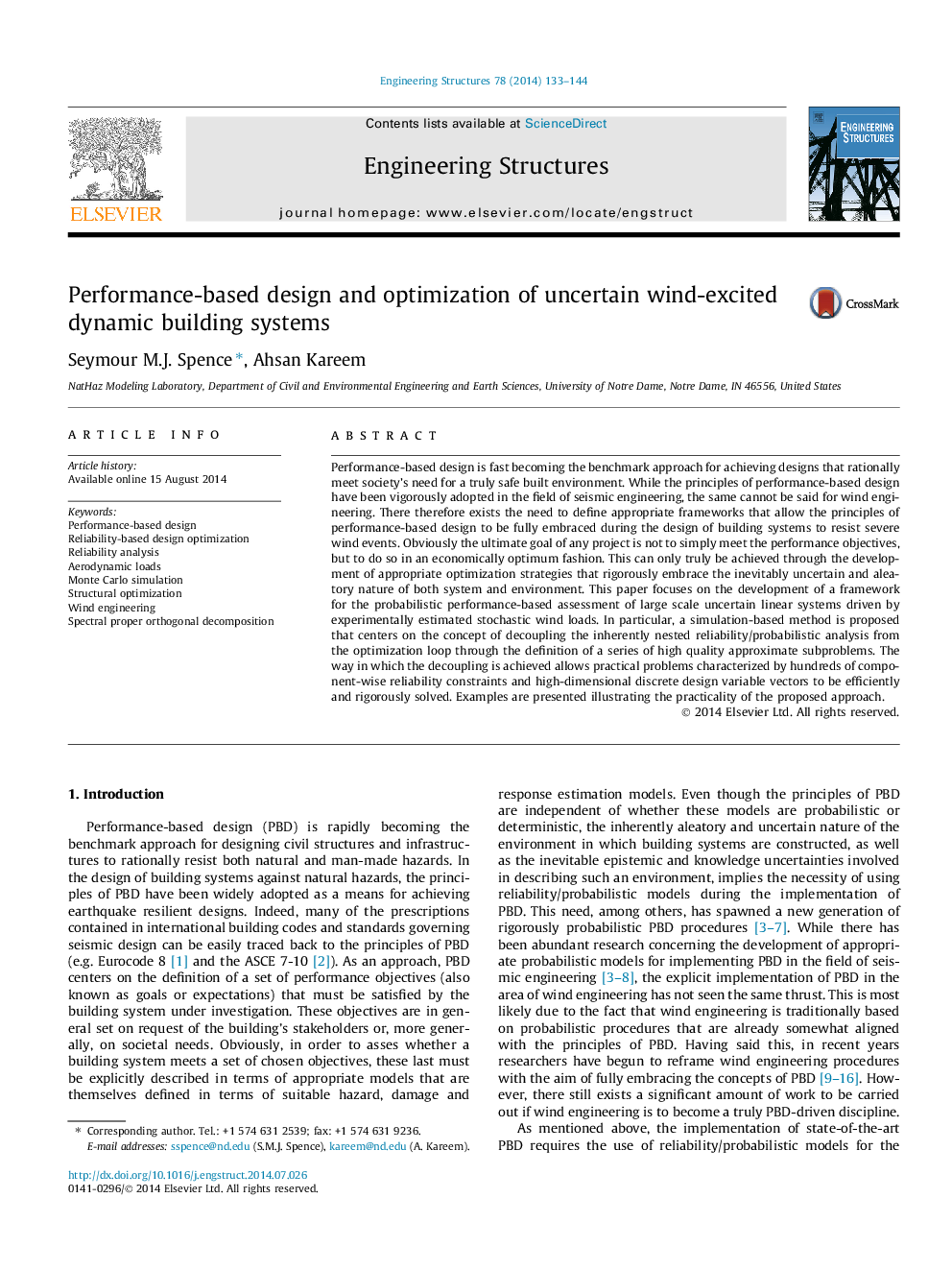| کد مقاله | کد نشریه | سال انتشار | مقاله انگلیسی | نسخه تمام متن |
|---|---|---|---|---|
| 266486 | 504365 | 2014 | 12 صفحه PDF | دانلود رایگان |
• A PBD framework for uncertain and dynamic building systems is defined.
• A novel reliability-based design optimization (RBDO) algorithm is presented.
• The algorithm is specifically designed to treat RBDO problems of high dimensions.
• The concept of auxiliary variable vector (AVV) is introduced.
• A full scale case study clearly shows the robustness of the proposed framework.
Performance-based design is fast becoming the benchmark approach for achieving designs that rationally meet society’s need for a truly safe built environment. While the principles of performance-based design have been vigorously adopted in the field of seismic engineering, the same cannot be said for wind engineering. There therefore exists the need to define appropriate frameworks that allow the principles of performance-based design to be fully embraced during the design of building systems to resist severe wind events. Obviously the ultimate goal of any project is not to simply meet the performance objectives, but to do so in an economically optimum fashion. This can only truly be achieved through the development of appropriate optimization strategies that rigorously embrace the inevitably uncertain and aleatory nature of both system and environment. This paper focuses on the development of a framework for the probabilistic performance-based assessment of large scale uncertain linear systems driven by experimentally estimated stochastic wind loads. In particular, a simulation-based method is proposed that centers on the concept of decoupling the inherently nested reliability/probabilistic analysis from the optimization loop through the definition of a series of high quality approximate subproblems. The way in which the decoupling is achieved allows practical problems characterized by hundreds of component-wise reliability constraints and high-dimensional discrete design variable vectors to be efficiently and rigorously solved. Examples are presented illustrating the practicality of the proposed approach.
Journal: Engineering Structures - Volume 78, 1 November 2014, Pages 133–144
